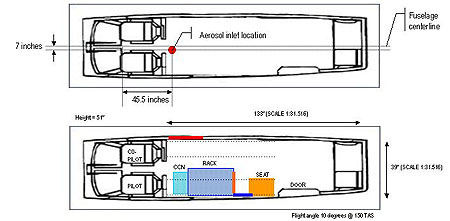|
General specifications |
- Certified for flight into known icing
conditions
- Pressurized cabin
- Two (2) Pratt & Whitney PT6A-28 turbine
engines
- 620 shaft horsepower per engine
- Two (2) three blade propellers,
constant-speed, reversible and fully feathering
- 34' 8" length; 12' 9" height; 42' 8"
wingspan
- 374 gallons fuel capacity (Jet A)
|
|
|
Weights |
- 9050 lbs maximum ramp weight
- 9000 lbs takeoff weight
- 9000 lbs landing weight
- 7200 lbs zero fuel weight
- 5020 lbs typical empty weight
- 3980 lbs typical useful load
|
|
|
Performance
- Both Engines (Maximum Takeoff Weight) |
- 283 kts max speed
- 269 kts max recommended cruise
- 75 kts stall speed in landing configuration
- 31,600 feet all engine service ceiling
- 2,710 feet per minute all-engine rate of
climb
- 1980 feet for take off over 50 foot obstacle
- 1410 foot take off ground roll
- 2480 feet landing over 50 foot obstruction
- 1430 foot landing ground roll
|
|
|
Performance
- Single Engine (Maximum Takeoff Weight) |
- 91 knots minimum control airspeed
- 14,600 feet single-engine service ceiling
- 660 feet per minute single-engine rate of
climb
|
|
|
|
- Cargo capacity – the SOAR research aircraft is
capable of carrying a load of 1000 pounds in
addition to a scientific crew of four persons and
maximum fuel.
- Maximum altitude – the maximum altitude of the
SOAR research aircraft is its service ceiling at
31,600 feet for a minimum on-station time of 3.5
hours.
- Range - the SOAR research aircraft has a maximum
range of 1200 nautical miles.
- Endurance - the SOAR research aircraft has an
endurance of 5 hours at scientific payload.
- Rate of climb – the climb capability of the SOAR
research aircraft at ISA carrying the scientific
payload is 2000 feet per minute.
- Research power – The aircraft main power is
connected to a main DC buss through a Cutler Hammer
Relay, then to the Main Power Cable connected to a
Power Distribution Rack Case which contains switch
breakers for individual system components including
de-icing power and 115V AC power. The research power
available on the 28V DC supply is 6.7kW and on 115V
AC supply is 1kW.
- Hard points – The SOAR research aircraft is
modified with two hard points (one per wing). The
following design describes the specifications of
each wing hard point:
Maximum Weight: 60 pounds
Center of Gravity: FS 137.0, BL 178.625
Maximum Moment Arm to Wing Undersurface: 10.4 inches
Equivalent Flat Plate Drag Area: 0.07 square feet
Skin doublers in the wing undersurface and in the
fuselage are designed for a variety of probes and an
air inlet port for air sampling inside the
pressurized cabin.
- Crew – the aircraft crew consists of a pilot, a
data system operator and up to two scientific
observers. An instrument technician usually
accompanies the crew in the field.
- Research speed - the SOAR research aircraft has
a research speed of 70 to 100 m/s. This speed can
be adjusted to fulfill each research task.
|
 |
|
Dimensions:
Length from aft side of spar to aft side of seat
rails: 75"
Length from aft side of seat rails to forward side of
aft baggage: 28"
Aft baggage: L-30",W-39.5",H-42.5" forward and 36" at
aft pressure bulkhead
Cabin: H-51",W-39.5" at floor level and 50" at arm
rest level
Door: H-45" and W-27"
Instrument rack: L-32",W-19",H-40"
Width between seat rails (width between rows): 14.5"
Width between side of cabin and seat rail: 2" at floor
level,4" at seven inches above the floor. |
 |